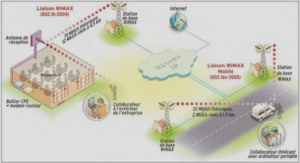The various approaches proposed to detect abnormal behaviors can be roughly divided in three categories: approaches based on probabilistic models, non probabilistic models and those using trajectory patterns to find anomalies.
Probabilistic Approaches
In this category of approaches, a generative model is usually used to determine the likelihood of a sequence of observed events or actions. Sequences with low probability are considered as abnormal behaviors. Approaches based on Markov processes, such as Hidden Markov models (HMMs), as well as models based on Bayesian formulation, such as Dynamic Bayesian networks (DBNs), have been widely used for state model-based approaches. State model-based approaches are the sequential approaches that represent a human activity as a model composed of a set of states. In both cases, an activity is represented in terms of a set of hidden states. A human is assumed to be in one state at each time frame, and each state generates an observation (i.e., a feature vector). In the next frame, the system transitions to another state considering the transition probability between states. Once transition and observation probabilities are trained for the models, activities are commonly recognized by solving the evaluation problem. The evaluation problem is the problem of calculating the probability of a given sequence (i.e., new input) generated by a particular state-model. If the calculated probability is high enough, the state model-based approaches are able to decide that the activity corresponding to the model occurred in the given input [Aggarwal and Ryoo (2011)].
Hara et al. (2002b) aimed to detect unusual human behavior in an intelligent home using Markov process. The data was collected from three sources – a two-storied house, an apartment house and daily action record (DAR) of the participants. In the intelligent two-storied house, the occupant was monitored via infrared-based small motion detectors (SMDs), cameras, passing sensors, window open/close sensors and operation detectors that register usage of almost all electric appliances. The apartment house consisted of SMDs only whereas the DAR was a self-report for a period of two months of starting and ending times of sleep, restroom use, bathing, dining, and leaving and returning to the home. The DAR was intended to be a macroscopic description of daily human activity. The authors used vector quantizing method since the number of SMD signal states was too large, and thus defined clustered sequences of sensor patterns, which were modeled. They defined two probability distributions for defining human activity – state transition probability of sensor states based on MCM and duration time distribution of Markov chain events acquired from starting and ending times of two successive states. The averaged log likelihood of the cluster sequence was computed given a duration time sequence. If either of the likelihood values were found to be below a threshold, the activity was labeled as unusual. From their results, the authors concluded that the likelihood measure can be applied to different houses and different types of data. Moreover, they also concluded that a human daily activity can be described through a probabilistic model.
In a work by Hu et al. (2009), a three phased approach for abnormal activity recognition is proposed. The approach initially applies Hierarchical Dirichlet Process (HDP) incorporated in a Hidden Markov Model (HMM). This allows an infinite number of states and the optimum number of hidden states is determined automatically. The second phase incorporates a Fisher kernel into the model with One-Class Support Vector Machine (OCSVM) used to filter out normal activities. Thus, they combine the generative nature of the HDP-HMM with the discriminative one of OCSVM. In the last phase, the abnormal activity model is derived in an unsupervised manner. They applied their approach on two real-world datasets consisting of activities such as Cleaning, yardwork, laundry, dish washing, etc. To detect abnormal activities, they manually labeled activities with low probabilities as abnormal and based their results upon detection of these activities. They also had a user simulate the effect of carrying out several abnormal activities in order to evaluate their approach. Their results, based on these experimental designs, demonstrate that their framework involving HDP and Fisher Kernel improves overall performance, empirically. The authors comment that by combining the generative and discriminative properties of HDP HMM and OCSVM with Fisher Kernel into their framework, they achieved a good performance.
As mentioned earlier, apart from models based on Markov processes, probabilistic models based on Bayesian networks, such as Dynamic Bayesian Networks (DBNs) have also been applied for the task of detecting activities.
Du et al. (2006) used DBNs to recognize activities wherein human interactions took place. Their model consisted of three states: global activity state, which generated global features associated with activities in a large spatial scale or relations between people, etc.; duration state, which indicated the remaining duration of the global activity state; and local state, which generated local features associated with motion details or posture of each person. The authors said that the model including such three kinds of states could model an interacting activity, completely. The authors used this model to identify human interactions taking place in the parking lot environment using a digital video camera. They used five different kinds of interacting activities, for testing the model. Their results showed that DBNs gave a good performance by recognizing the interacting activities, more significantly, identifying the complex activity where two people approach and meet, one puts an object on the ground and goes away, and the other takes this object and goes away. The authors concluded that their approach gave a superior performance when compared to HMMs.
INTRODUCTION |




